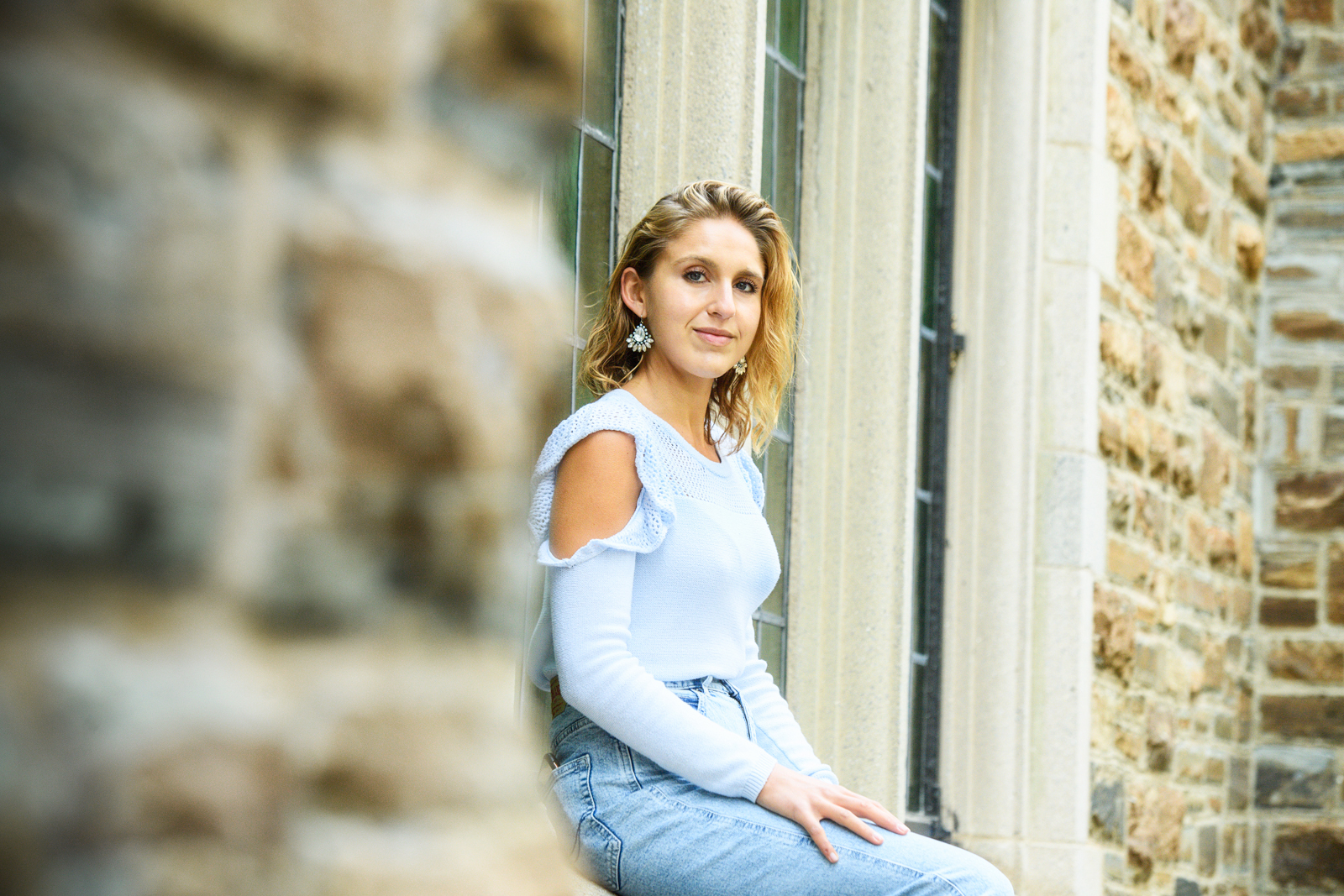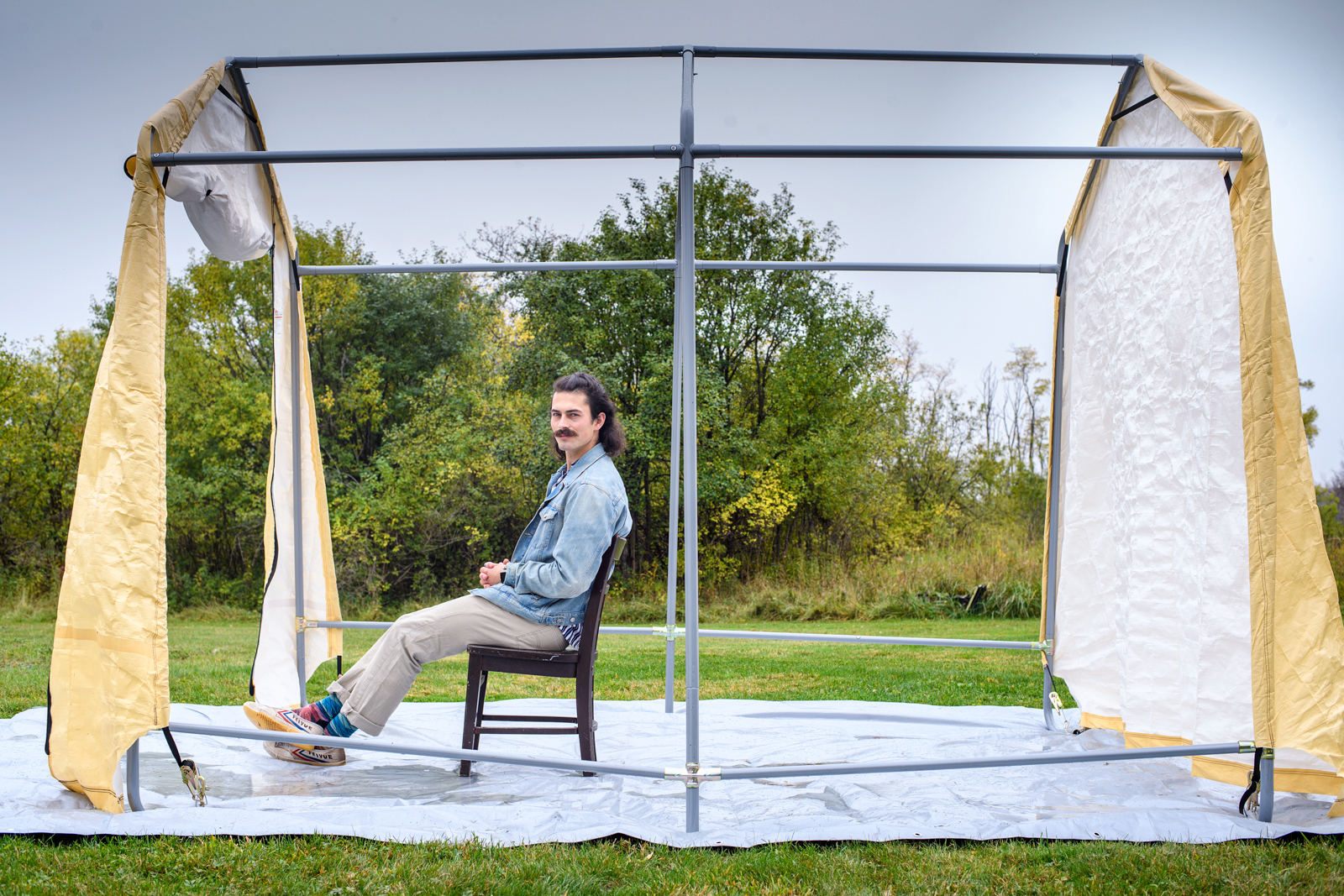
Their varied topics: data science, social change and impact, and sustainable architecture.
Each of the seniors said that Hamilton’s open curriculum made it possible for them to pursue their particular passion. It wasn’t the easiest path, but they were supported en route by advisors and professors, and now, deep into their senior year, they’re glad they took it.

“It was a lot of work. I’m not going to lie,” Sophia Archos ’21 said. “I mean, I had to do extensive research and outlining and formatting, so it was an undertaking for sure, but in the end, I think I’ve been able to create my education exactly how I wanted. It’s a really unique opportunity.”
Interdisciplinary concentrators must have their majors approved by their advisors, all the relevant departments, and the Committee on Academic Standing.
Archos’ major is social change and impact, which incorporates economics, public policy, and sociology. Her senior thesis revolves around social responsibility, an ethical theory in which individuals are accountable for fulfilling their civic duty.
She entered Hamilton knowing that her goal was law school, and she’s applying to law schools now. She also came in thinking she’d major in economics, but the flexibility of the open curriculum and the intellectual curiosity encouraged at Hamilton inspired her to create a more personal concentration.
“Law school doesn’t require any certain major, and to be honest, I didn’t think economics alone would give me the education I fully wanted or needed to be the best lawyer or the well-rounded person I could be,” she added. “And so I really felt encouraged to take on this creative undertaking.”

In building his major, Zhaosen Guo ’21 turned not only to his advisor and to the chairs of relevant departments, but to sundry other professors, too, and found them all helpful. He describes his data science interdisciplinary concentration as a marriage between math and computer science.
As a senior fellow in the Admission Office who meets with prospective students, Guo views himself as proof of Hamilton’s promise that its students can “study what you love.” He says he tells them with confidence that they can do so on the Hill.
Like Guo and Archos, Andrew Charman ’21 was drawn to Hamilton in part by the open curriculum. He wanted to develop himself holistically as a person, he says. He thought he’d major in physics, but that didn’t pan out. When he took a course called Making Modern Cities his first year, he realized he enjoyed learning about architecture and architectural movements and examining the parallels he saw in his own life.

His advisor suggested he consider an interdisciplinary concentration and that he research bachelor’s degree programs in architecture. The result, after many months of work, was Charman’s sustainable architecture major, which draws from art, art history, environmental studies, and physics. For his senior project he’s building a semi-portable, high efficiency, low-impact residential structure that he hopes to live in (for a while) after he graduates.
I think that if I had gotten a bachelor’s in architecture, an undergraduate architecture degree, then I would have just been so focused on architecture that I wouldn’t really have had time to develop listening skills and presentation skills, a lot of the soft skills, that Hamilton touts that it develops in its students,” Charman said. “It sounds like I’m pumping my own tires, like ‘a model Hamilton student’ or whatever, but I firmly believe the reason that I chose Hamilton was to develop those skills within myself. And regardless of the major that you choose at Hamilton, you’re going to develop those skills.”



